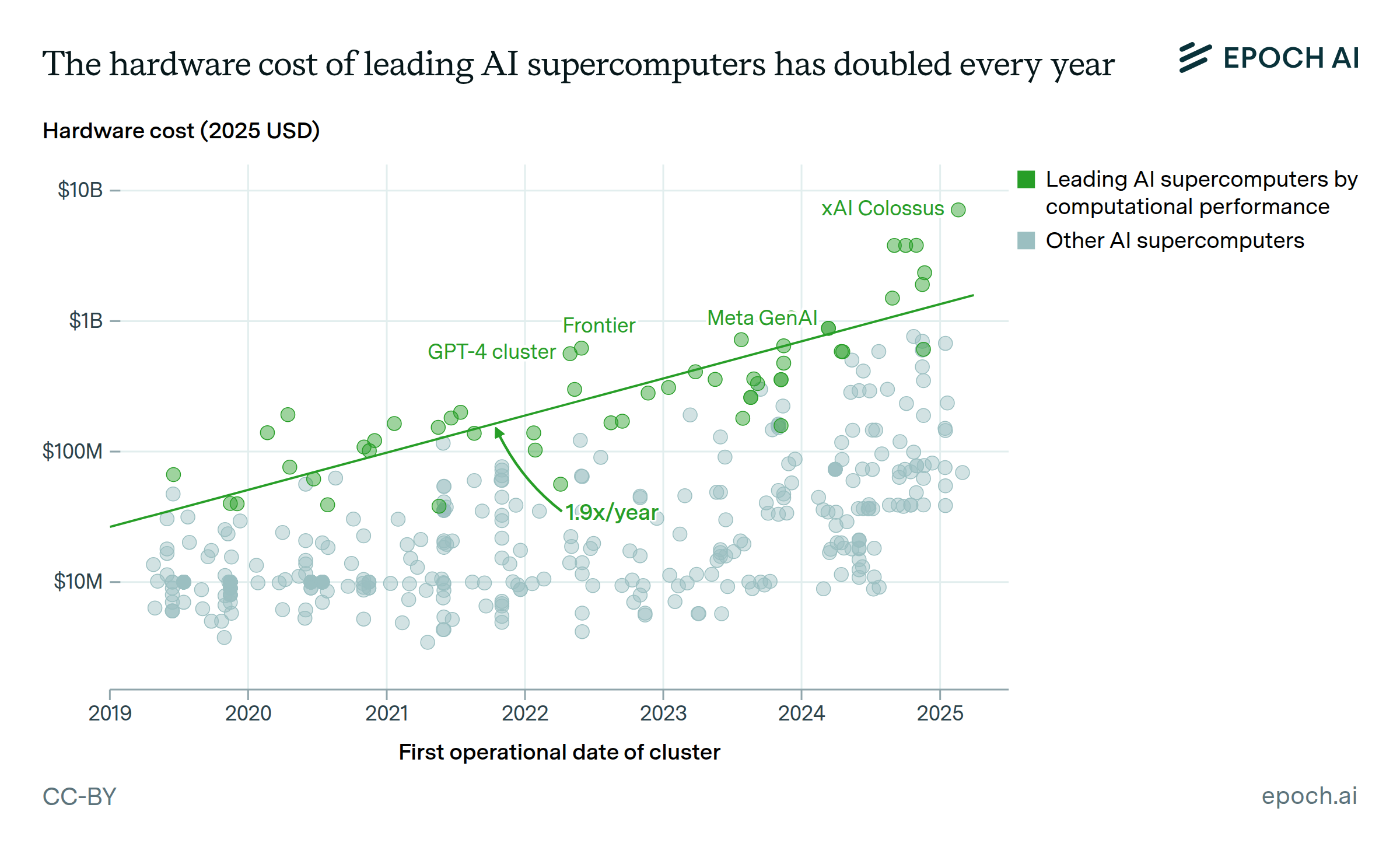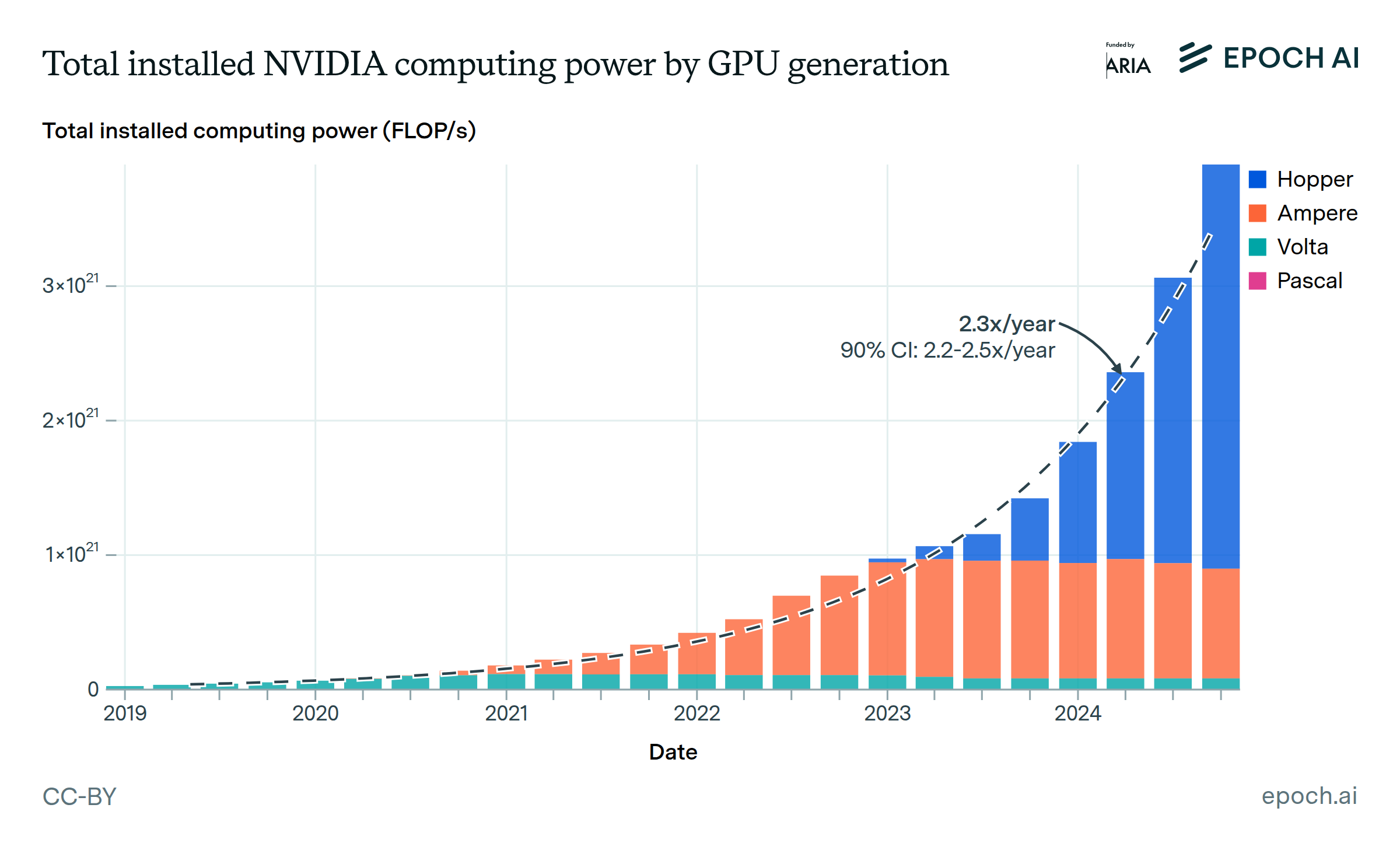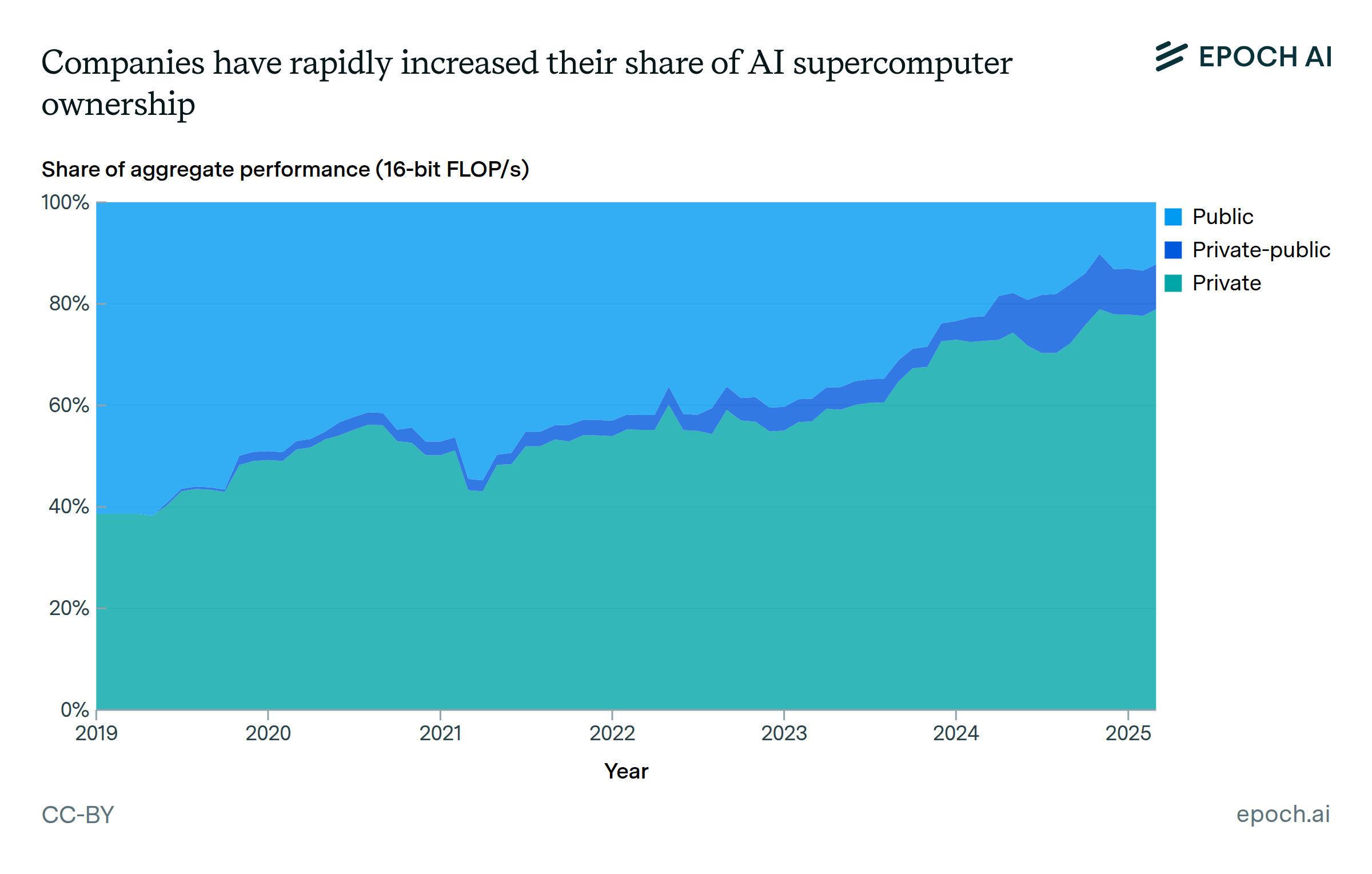The US hosts the majority of GPU cluster performance, followed by China
As of May 2025, the United States contains about three-quarters of global GPU cluster performance, with China in second place with 15%. Meanwhile, traditional high-performance computing leaders like Germany, Japan, and France now play marginal roles in the AI cluster landscape. This shift largely reflects the increased dominance of major technology companies, which are predominantly based in the United States.

Published
June 5, 2025
Learn more
Data
Data come from our GPU Clusters dataset, which collects information on 728 clusters with dedicated AI accelerators, spanning from 2010 to the present. As of March 2025, we estimate that our dataset contained 10–20% of all AI compute produced before 2025. We focus on the 501 AI clusters which became operational in 2019 or later, since these are most relevant to modern AI training.
While collecting data on each cluster, we record as specific a location as possible, based on its location reported in official announcements or third-party coverage. 95% of clusters have their location recorded to at least the level of their country, while 74% have more specific location data. We also record their computational performance rate (measured in FLOP/s or OP/s) in 32-, 16-, and 8-bit arithmetic formats as reported or calculated from the constituent chips.
For more information about the data, see Pilz et. al., 2025, which describes the AI clusters dataset and analyzes key trends, and the dataset documentation.
Analysis
The dataset is filtered to clusters that have known country, first operational date, and 16-bit computational performance, leaving us with 417 clusters. Performance is then aggregated by country for each date from 2019-01-01 to the present date. The aggregate performance values are shown in a stacked area chart, normalized as percentages of the total computational performance of all supercomputers in our dataset as of each date.
The 27 member countries in the European Union (as of April 2025) are aggregated and shown as a single category. The chart shows the relative compute share over time of the top five countries (or the EU) by AI cluster capacity as of the present date. These top five are currently:
- USA, 74.5%
- China, 14.1%
- EU, 4.8%
- Norway, 1.8%
- Japan, 1.4%
Clusters in other countries are aggregated and shown as a single “Other” category, which contains 3.5% of compute capacity.
Assumptions and Limitations
- Many of the GPU clusters captured in our dataset are available through cloud services, and can be used by developers in other countries. Therefore, a lack of clusters represented in this dataset located in a given country does not imply that AI models cannot be developed there.
- Some countries do not appear in our totals: they may not have any GPU clusters that meet our inclusion criteria, or their existing clusters may not be publicly disclosed and identified by our search procedure.
- As of March 2025, our dataset covers about 10-20% of total AI computing capacity, relative to the world’s cumulative supply of AI chips manufactured. This includes roughly 20-37% of NVIDIA H100s, 12% of A100s, and 18% of AMD MI300Xs; meanwhile, we estimate we cover less than 4% of Google’s TPUs and a negligible fraction of custom chips designed by AWS, Microsoft, or Meta. We also only cover about 2% of NVIDIA chips designed to be sold in China (including the A800, H800, and H20). From the end of 2020 to the end of 2024 we cover between 10-20% of total Chinese 16-bit FLOP/s based on an estimate by IDC (2025). For more details, see Appendix C.1.1 and C.3.1 in our paper.
- While we were able to assess our coverage of major U.S. companies to be about 15% and of total Chinese compute to be about 20%, we did not assess coverage for other countries. Given our low coverage, the actual share of individual countries could easily differ by 5 or more percentage points. If all qualifying supercomputers were accounted for, the geographic distribution and national shares may be different from the result shown here.





